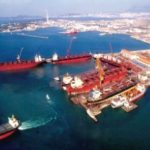Alumina market enters Q3 torn between unexpected surplus, curtailment risks

The global alumina market is set to continue grappling with trade flow disruptions in the third quarter caused by the Russia-Ukraine war and a surplus of Australian supply, with refinery and smelter restarts and curtailment risks in the Atlantic basin adding to the volatility.
Buyers in China are largely expected to remain on the sidelines in Q3, with Australian imports still priced significantly higher than domestic supply, while China’s alumina exports are expected to remain high on unprecedented Russian demand as it positions itself as a key alternative to Australian alumina.
In the Atlantic basin, refinery restarts and smelter curtailments are expected to dominate price cues in Q3, with market participants generally anticipating premiums will ease, barring any major disruption to refinery operations.
Benchmark Platts FOB Australia alumina was assessed at $367/mt FOB June 30, with the FOB Brazil alumina differential at a $32/mt premium to Australian material, S&P Global Commodity Insights data showed. The Platts China ex-works Shanxi daily alumina assessment was steady for most of June and ended the quarter at Yuan 2,870/mt.
Platts FOB Australia alumina assessment rose early in the year to heights not seen since US sanctions on Russian aluminum giant Rusal and refinery output cuts at Brazil’s Alunorte in 2018. Platts FOB Western Australia assessment peaked at $533/mt in Q1, surpassing the $484/mt high in Q4 2021.
However, Australia’s March 20 ban on alumina and bauxite exports to Russia resulted in an immediate global ex-Russia glut, and prices plunged by nearly a third in a month to $371/mt FOB on April 20. The $353/mt FOB reached June 6 marked the bottom for the quarter, but remained slightly above the year-to-date low of $345/mt FOB on Jan. 7.
China’s domestic prices also fell in Q2 on the back of new refining capacity and seaborne price declines, but less sharply as high production costs and smelter restarts stemmed the decline.
Australia’s export ban to Russia caps prices
In the wake of Australia’s export ban announcement, sellers rushed to offload cargoes destined for Russia to other buyers, pressuring prices lower.
Will Chinese alumina exports to #Russia remain elevated in Q3?
— S&P Global Commodity Insights Metals (@SPGCIMetals) July 6, 2022
“The sharpest plunge was when transacted prices fell $30/mt within 36 hours,” a trader said, referring to two consecutive spot trades at $440/mt and $410/mt FOB Australia in early April. “Those were not the worst prices to sell, though.”
While the pace of decline slowed after prices breached $400/mt FOB, market participants continue to expect the ex-Russia surplus to cap Australian prices in Q3, barring significant refinery cuts due to high energy prices or a change in Australia’s export policy.
Nevertheless, Chinese buyers remain priced out of the market despite the glut by the high premium of Australian material to domestic alumina.
The implied premium exceeded $200/mt in March before easing after the export ban announcement, but remained prohibitive at around $60/mt at end June.
China turns net exporter on Russian demand
With its alumina supply pipeline from Australia and Ukraine closed, Russia hunted for alternative supplies across Asia in Q2.
Southeast Asia plugged part of its supply gap, but China’s expanded refining capacity and its proximity to Russian Far East ports quickly enabled it to become Russia’s largest supplier.
China’s alumina exports surged more than 18 times on the year to 167,724 mt in April and made it a net exporter for the first time since February 2019, customs data showed. Exports rose further to 188,768 mt in May, with more than 80% destined for Russia.
Russia was procuring Chinese alumina at around Yuan 3,000/mt from northern ports at end June, according to sources familiar with the trade. While Yuan-denominated prices remained largely stable through Q2, the depreciation of the Yuan since end-April meant the exports became cheaper on a dollar basis.
Alumina from northern Shandong province comprised the bulk of the exports to Russia due to the proximity of its refineries to coastal ports and the use of imported Guinean bauxite.
Sources in China said the market would be monitoring refining costs and raw material prices in Q3 as higher prices of bauxite, caustic soda and coal could pressure refineries to taper production.
“The main risk to Russia’s supply from China is if high-cost refineries are forced to curtail output due to rising production costs,” a trader said. “Refineries could need to keep long-standing relations with existing customers and prioritize them, even if Russia is able to pay slightly more.”
Nevertheless, global market participants expect China to keep up its supply to Russia, which provides a steady income stream amid a cloudy macroeconomic outlook.
Western energy crisis threat
Following smelter curtailments in Europe since late 2021, aluminum smelters in the US have become the new casualties of spiraling energy prices arising from the Ukraine conflict.
Alcoa curtailed one of three operational potlines at its Warrick aluminum smelter in Indiana July 1 “due to operational challenges,” taking 54,000 mt/year of production offline.
In June, Chicago-based Century Aluminum said it would suspend operations at its Hawesville, Kentucky smelter for up to a year due to the rising cost of energy. The smelter was operating at 80% of its 250,000 mt/year capacity at the time.
The timing of the smelter curtailments coincides with the restart of the Jamalco refinery in Jamaica, which had halted operations due to a major fire in August 2021.
Jamalco, a 55:45 joint venture between Noble Group and Clarendon Alumina Production with a production capacity of 1.417 million mt/year, typically exports a large portion of its output to Europe, where Jamaican alumina is duty-free.
“This could have a double whammy effect on the alumina supply-demand complex, especially in the Atlantic basin, since supply is going up while demand is sliding,” a trader said. “We may have yet to see the last of smelter curtailments this year given the skyrocketing energy prices while aluminum [prices] slump.”
Any further smelter curtailments in the Atlantic could drive regional premiums higher, but also diminish support for the Brazilian alumina differential to the Pacific basin as demand would moderate on reduced smelting activity.
While smelter curtailments have been the focus since late 2021, some market participants said high costs of production could create risks for refinery operations in the Atlantic, especially in parts of Europe.
“The San Ciprian refinery in Spain could be facing high refining costs, and I’m not sure if it’s sustainable with these energy prices,” a trader said. Alcoa’s San Ciprian smelter curtailed operations in December due to high power costs.
Source: Platts

 Hellenic Shipping News Worldwide Hellenic Shipping News Worldwide, Online Daily Newspaper on Hellenic and International Shipping
Hellenic Shipping News Worldwide Hellenic Shipping News Worldwide, Online Daily Newspaper on Hellenic and International Shipping























 PG-Software
PG-Software